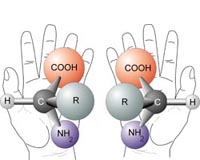 |
Potsdam, Germany (SPX) Sep 21, 2009 Researchers from the Open University are laying the groundwork for a new equation that could mathematically quantify a habitat's potential for hosting life, in a similar way to how the Drake equation estimates the number of intelligent extraterrestrial civilizations in the Milky Way. Dr. Axel Hagermann will be proposing a method to find this 'habitability index' at the European Planetary Science Congress in Potsdam, Germany. "At present, there is no easy way of directly comparing the suitability of different environments as a habitat for life. The classical definition of a habitable environment is one that has the presence of a solvent, for example water, availability of the raw materials for life, clement conditions and some kind of energy source, so we tend to define a place as 'habitable' if it falls into the area where these criteria overlap on a Venn diagram. This is fine for specific instances, but it gives us no quantifiable way of comparing exactly how habitable one environment is in comparison with another, which I think is very important," said Dr. Hagermann, who originates from Recklinghausen in Germany. Dr. Hagermann and colleague Prof. Charles Cockell have the ambitious aim of developing a single, normalized indicator of habitability, mathematically describing all the variables of each of the four habitability criteria. Initially, they are focusing on describing all the qualities of an energy source that may help or hinder the development of life. "Electromagnetic radiation may seem simple to quantify in terms of wavelengths and joules, but there are many things to consider in terms of habitability. For instance, while visible and infrared wavelengths are important for life and processes such as photosynthesis, ultraviolet and X-rays are harmful. If you can imagine a planet with a thin atmosphere that lets through some of this harmful radiation, there must be a certain depth in the soil where the 'bad' radiation has been absorbed but the 'good' radiation can penetrate. We are looking to be able to define this optimal habitable region in a way that we can say that it is 'as habitable' or 'less habitable' than a desert in Morocco, for example," said Dr. Hagermann. The pair will be presenting their initial study and asking for feedback from colleagues at the European Planetary Science Congress. "There may be good reasons why such a habitability index is not going to work and, with so many variables to consider, it is not going to be an easy task to develop. However, this kind of index has the potential to be an invaluable tool as we begin to understand more about the conditions needed for life to evolve and we find more locations in our Solar System and beyond that might be habitable," said Dr. Hagermann. Share This Article With Planet Earth
Related Links EPSC 2009 Life Beyond Earth Lands Beyond Beyond - extra solar planets - news and science
 Space Hand-Me-Downs
Space Hand-Me-DownsMoffett Field CA (SPX) Sep 21, 2009 Molecules vital to life have been detected in outer space and isolated in meteorites and comets. Some of this material that rained down on Earth may have jump-started biology. If so, these space seeds also may have planted a particular molecular orientation, or "handedness," that spread to the world's first creatures. New research is studying how this handedness could arise in space. ... read more |
|
| The content herein, unless otherwise known to be public domain, are Copyright 1995-2009 - SpaceDaily. AFP and UPI Wire Stories are copyright Agence France-Presse and United Press International. ESA Portal Reports are copyright European Space Agency. All NASA sourced material is public domain. Additional copyrights may apply in whole or part to other bona fide parties. Advertising does not imply endorsement,agreement or approval of any opinions, statements or information provided by SpaceDaily on any Web page published or hosted by SpaceDaily. Privacy Statement |